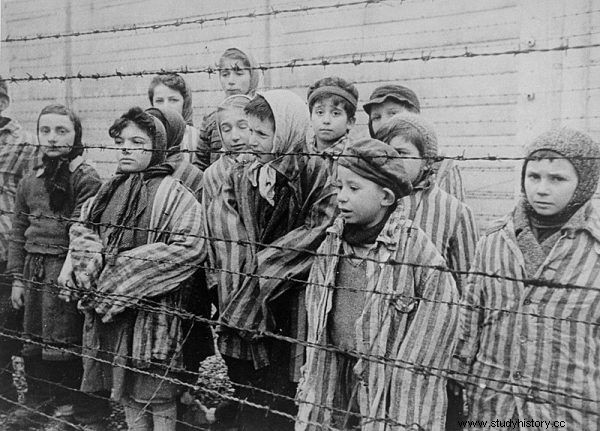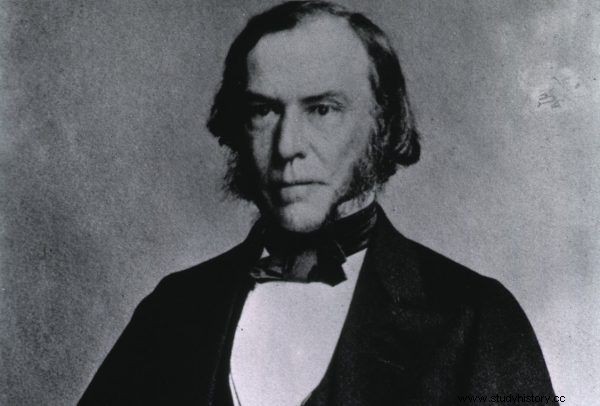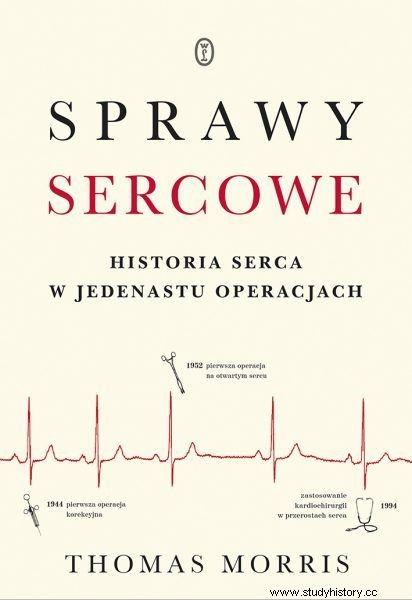First, do no harm? The Hippocratic principle did not always guide doctors. Pioneers of medicine, genius scientists, and sadistic degenerates have sometimes put ethics aside when it comes to experimenting with humans. After all, isn't that the price of progress?
The motivations underlying medical experiments were usually noble:research was expected to help understand the human body, develop new drugs and therapies, or simply save lives. However, there were also doctors who hid sadistic curiosity behind the slogans about progress and the fight for health.
Whatever their motives, those who stepped onto the swampy ground of turning their patients into guinea pigs broke certain taboos. Who have gone the furthest in this?
Work on sick goods
One of the darkest pages in the history of medicine was written during World War II by the Nazi "doctors" led by the Angel of Death - Dr. Josef Mengele. For him and similar sadists in coats, the Third Reich was a real paradise.
As reported by Gretchen E. Schafft, a researcher dealing with Nazi Germany:"Pseudoscientists experimenting on people could count on the support of state institutions . Their patients were called "Krankengut", a sick commodity. ”

The Nazis conducted inhuman experiments on inmates in Auschwitz - they also used children to do so.
In concentration camps, "medics" tested, among other things, sterilization with x-rays, tested the effects of questionable drugs, conducted "research" on hypothermia, typhus and malaria, and performed brutal surgical procedures. They were brought before a tribunal in Nuremberg for their crimes after the war.
However, not only the Nazis enjoyed inhuman experiments . Researchers from Russia also had special "achievements" in this field - for example, Ilya Ivanov, a professor of biology at Kharkiv University, who envisioned the interspecies crossing of humans and animals.
Perfect poison
However, while in the case of Ivanov no one was seriously hurt, the experiments conducted by Grigory Majranowski had more tragic consequences. In the 1930s, this toxicologist was given a special assignment by Stalin. "In addition to preparing effective poisons, he was also supposed to create substances that would kill without leaving a trace in the victim's body "- report Andrzej and Marta Goworski, columnists writing about scientists in the USSR, among others.
The prisoners became the experimental rabbits of the Soviet researcher. As the authors of "Scientists from under the red star" describe:"Kat received an" order "from Majranowski, containing the characteristics of the victims for pseudoscientific experiments, such as race, age, health or carcass.
What happened next with the research "subjects"? The degenerate scientist tested poisons such as strychnine, curare, cyanide, and aconitine (one of the most deadly plant alkaloids) on them.
His pseudo-experiments did not end until the end of World War II. It was not, however, that the conscience of the criminal (or his principals) was disturbed. The death penalty was simply temporarily abolished in the USSR and ... there were no prisoners for it . Which doesn't mean he stopped killing - he just did it outside the lab walls.
The real Dr. Frankenstein
However, the macabre research was not always the result of madness or the criminal tendencies of the scientist who conducted them. At times, doctors in good faith turned their patients into guinea pigs. And that they sometimes died? Well, it was a calculated risk…
" Surgeons have ventured into blind alleys more than once ... They were carried away by premature fantasy long before anesthesia and the operating room were ready for it, ”notes Thomas Morris in the book Matters of the Heart. The history of the heart in eleven operations ”. This was the case with the work of Victorian physician Charles Moore, a pioneer in the treatment of aortic aneurysms.
The procedure he developed was carried out in the 1940s. It consisted in filling the aneurysm with a wire coil, around which the patient's body would form a fibrin envelope, "cutting off the power supply" of the hematoma. Moore's first patient survived only four days (25 meters of steel wire was pushed into his aneurysm), but this did not alienate the medical community. As Morris describes:
Other surgeons quickly appreciated the elegant simplicity of Moore's treatment and applied it with numerous modifications. Instead of wire, attempts were made to use catgut, silk and horsehair, and two Italian surgeons even inserted numerous clock springs into the aneurysm which experiment ended in the death of the patient when several of these springs entered the heart.

Charles-Édouard Brown-Séquard laid the foundations for the creation of artificial circulation.
Playing with the health and life of the sick paid off in the case of the French physiologist Charles-Édouard Brown-Séquard. He did not intend to play god - although, paradoxically, the aim of his research was ... bringing the dead back to life !
The Frenchman conducted his most famous experiment (on a guillotined convict) on June 18, 1851. He waited for the criminal's body to engulf rigor mortis and then amputated the dead man's arm and started injecting his own fresh blood into it.
"The two friends who accompanied him, curious about the performance, dropped a vein in Brown-Séquard's left arm a third of a pint of blood which they whipped vigorously and filtered through a rag, and then injected it into the severed limb "- reports the author of the book" Sprawyardyowe ". The macabre method worked - the convict's muscles stopped being stiff and began to respond to stimuli, laying the foundations for work on artificial circulation, which today often saves cardiac surgery patients.
Childhood straight out of horror
Experiments on prisoners, convicts or volunteers are one thing, but a completely different issue is research conducted on children . Subjecting children to potentially lethal procedures just to satisfy their own sick curiosity or to test another unproven idea is simply morally wrong.
Even so, there were people who were ready to turn a blind eye to the ethical aspects of this venture. As early as in the 13th century, Emperor Frederick II Hohenstauf, fascinated by the development of speech in toddlers, ordered that a group of children be locked up in isolation. He wanted to recreate the language of Adam and Eve in this way, but all he achieved was the death of the little subjects (who in addition have not developed any method of communication).

Emperor Frederick II Hohenstauf conducted the so-called deprivation experiment to recreate the speech of Adam and Eve. Effect? Study children died.
Speech therapist Wendell Johnson, author of the famous "Monster Study", also harassed the underage charges. In 1939, he selected 22 orphans, almost half of whom stuttered. Those stuttering-talking researchers encouraged exercise. On the other hand, the children with speech problems, the doctor and his colleague, Mary Tudor, were simply terrorized.
The effects did not take long to come. After two days the little ones started to have problems (some fell silent completely). The hapless victims of the experiment struggled for many years with the "side effects" of stuttering.
Surgeons also have a lot to complain about in this regard. In October 1984, Dr. Leonard Bailey decided to transplant a baboon heart to a newborn girl. The little patient survived less than three weeks after the procedure, and the whole thing was widely echoed in the medical community.
A scalpel for heart trouble
The Canadian surgeon Gordon Murray came up with an equally unsuccessful (and deplorable) idea in 1948. He also dealt with heart problems in the youngest. His charges suffered from an abnormality called colloquially "a hole in the heart" . This is a simple but potentially fatal defect that is relatively easy to treat today.

In the middle of the last century, however, doctors did not have access to the inside of the organ to be able to simply sew up the opening. So Dr. Murray decided to patch the defect with connective tissue from the thigh. This is how Thomas Morris describes the procedure in his book Matters of the Heart:
Using a large needle he pulled two or three strips of this fabric across the heart front to back, so that they cover the hole, and then tighten them firmly (…). Murray called this technique a 'living seam' because the material used was not silk or ketgut, but the patient's own tissue.
The idea itself was brilliant, but in practice unsatisfactory, as the hole never completely sealed. One child died during the operation and the condition of the other three improved only slightly.
Father of millions of children
The ethical costs of medical advancement became known in April last year, when New York City authorities removed a monument to the pioneer of modern obstetrics, James Marion Sims, from Central Park. Why? After all, he was called "the father of American gynecology" for a reason. He developed a revolutionary technique to repair vesico-vaginal fistula, which was a relatively common postpartum complication in the 19th century.
And he was not without fault, however. Although, as a doctor, he had the welfare of his patients in mind, his actions as a scientist are still scary today.

James Marion Sims went down in history as the father of American gynecology. He created a device that is still used today - a gynecological speculum.
Before he disseminated his method, he perfected it on black slaves. One of the women operated over 30 times - without anesthesia, of course. It was a common belief at the time that African Americans did not feel pain, which was very convenient for doctors. All this to be able to offer the "right" patients the best possible care.
It was not the only example of sacrificing individuals for the greater good - because this is how the madmen and visionaries who conduct controversial medical experiments explain their behavior. Suffice it to mention Tuskagee and Guatemala, where American scientists infected citizens with syphilis, or the 2016 case when a pharmaceutical company tested psychotropic drugs on patients from Romania - without their consent!
However, can such behavior be justified at all ? Some say yes, because without human experimentation, medicine would stand still. However, others believe that the cost is too high for any benefit. Ultimately, the guiding principle of this teaching is "do no harm."
Bibliography:
- Stephen Amidon, Thomas Amidon, A genius machine. Heart biography , Mark, 2012.
- Marta and Andrzej, Goworscy, Scientists from under the red star , PWN 2016.
- Thomas Morris, Matters of the heart. The history of the heart in eleven operations , Wydawnictwo Literackie, 2019.
- Gretchen E. Schafft, From racism to genocide. Anthropology in the Third Reich , Publishing House of the Jagiellonian University 2006.
- Ings Simon, Stalin and the scientists , Agora 2017.
- Jürgen Thorwald, Centenary of Surgeons , Mark 2010.
- L. Lewis Wall, The medical ethics of Dr J Marion Sims:a fresh look at the historical record, Journal of Medical Ethics, 2006/06, 32 (6).
